
Journal of Engineering Science and Technology
Scope & Guideline
Exploring the Frontiers of Engineering Science and Technology
Introduction
Aims and Scopes
- Engineering Applications and Innovations:
The journal emphasizes practical applications of engineering principles in various sectors, including mechanical, civil, electrical, and environmental engineering, showcasing innovations that improve processes and systems. - Sustainable Development and Environmental Engineering:
A core focus area includes research on sustainable engineering practices, environmental protection, and the development of eco-friendly technologies that align with global sustainability goals. - Computational Methods and Modeling:
The journal explores computational techniques and simulation models that enhance engineering design, analysis, and decision-making in complex systems, including the use of artificial intelligence and machine learning. - Interdisciplinary Research:
Encouraging collaboration across disciplines, the journal publishes studies that integrate engineering with fields such as information technology, health sciences, and social sciences to tackle multifaceted problems. - Education and Training in Engineering:
The journal also addresses educational methodologies and technologies in engineering education, focusing on innovative teaching strategies that enhance learning outcomes for students.
Trending and Emerging
- Artificial Intelligence and Machine Learning Applications:
AI and machine learning are increasingly featured in engineering research, focusing on predictive analytics, automation, and optimization in various engineering fields. - Sustainable and Green Engineering:
There is a rising emphasis on sustainable practices, including research on renewable energy technologies, waste management, and eco-friendly materials, reflecting global environmental concerns. - Smart Technologies and IoT Integration:
Research on the integration of smart technologies and the Internet of Things (IoT) in engineering applications is trending, focusing on enhancing efficiency and connectivity in systems. - Digital Transformation in Engineering Education:
Studies exploring the impact of digital tools and online learning methodologies in engineering education are emerging, particularly in response to the COVID-19 pandemic. - Health and Safety Engineering:
The journal is increasingly publishing research on health and safety engineering, particularly in the context of public health concerns and the implications of engineering practices on community health.
Declining or Waning
- Traditional Manufacturing Techniques:
Research related to traditional manufacturing processes has seen a decline as newer technologies, such as additive manufacturing and automation, gain prominence in the industry. - Conventional Energy Sources:
There is a noticeable decrease in studies focusing on fossil fuels and conventional energy sources, overshadowed by the increasing interest in renewable energy solutions and sustainability. - Basic Theoretical Studies:
Research that emphasizes fundamental theoretical frameworks without immediate practical application has waned, as the journal increasingly favors studies with direct implications for engineering practice. - Stand-Alone Engineering Disciplines:
The separation of engineering disciplines has diminished, with a growing trend towards interdisciplinary approaches that integrate multiple fields to address complex engineering challenges. - Localized Case Studies:
There has been a shift away from localized case studies that do not have broader implications or applications, as the journal seeks to publish research with global relevance and applicability.
Similar Journals
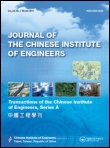
JOURNAL OF THE CHINESE INSTITUTE OF ENGINEERS
Empowering innovation through multidisciplinary research.The Journal of the Chinese Institute of Engineers, published by Taylor & Francis Ltd, serves as a vital platform for the dissemination of innovative research in the field of engineering. Since its inception in 1978, this journal has been committed to advancing knowledge and fostering academic dialogue in general engineering and its multidisciplinary applications. With its current ranking of Q3 in the 2023 Engineering (miscellaneous) category, it is recognized within Scopus as the 139th out of 307 journals, placing it in the 54th percentile of its field. The journal facilitates access to a diverse range of high-quality articles, promoting a deeper understanding of contemporary engineering challenges. Although it does not operate on an open-access model, its insights are invaluable for researchers, professionals, and students eager to stay at the forefront of engineering advancements. Located in Oxford, England, the journal is poised to continue its influential role in shaping the future of engineering research until 2024 and beyond.

KOREAN JOURNAL OF CHEMICAL ENGINEERING
Fostering Global Collaboration in Chemical Research.The Korean Journal of Chemical Engineering is a prestigious publication by the Korean Institute of Chemical Engineers, dedicated to advancing the field of chemical engineering and its associated sciences. Established in 1984, this journal has made significant contributions to the dissemination of innovative research, covering a broad spectrum of topics within chemical engineering and general chemistry. With a current impact factor placing it in the Q2 quartile within both the chemical engineering and chemistry categories, it is recognized for its rigorous peer-review process and high-quality articles. The journal provides a valuable platform for researchers, professionals, and students to share their findings and collaborate on emerging methodologies and technologies. Although it does not offer open access options, its broad international readership, bolstered by its Scopus rankings — including a commendable #108 in general chemical engineering — ensures widespread visibility and dissemination of published works. As it approaches its 40th anniversary in 2024, the Korean Journal of Chemical Engineering continues to be an essential resource for anyone engaged in the field, driving innovation and academic dialogue worldwide.
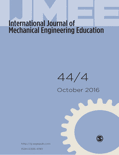
International Journal of Mechanical Engineering Education
Empowering Future Engineers with Innovative InsightsThe International Journal of Mechanical Engineering Education, published by SAGE Publications Inc, serves as a premier platform dedicated to advancing the field of engineering education, with a specific focus on mechanical engineering. With a history dating back to 1981, this journal has established itself as a vital resource for researchers, educators, and industry professionals alike, offering insights and scholarly articles that foster innovation and improve pedagogical approaches within the discipline. The journal is currently indexed in Scopus, ranking #542 in Education and #311 in Mechanical Engineering, reflecting its significant contribution to both academic and engineering communities. Although it does not have open access options, the quality and depth of research disseminated through its pages are undeniable, making it an essential read for anyone involved in engineering education. With a Q3 categorization in both relevant fields as of 2023, the journal continually strives to enhance the learning experience and methodologies in mechanical engineering education, paving the way for a future generation of skilled engineers.
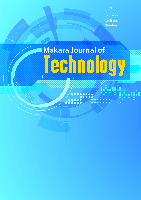
Makara Journal of Technology
Transforming Ideas into Impactful SolutionsMakara Journal of Technology, published by Universitas Indonesia, Faculty of Engineering, is a premier open-access journal dedicated to the dissemination of innovative research and technological advancements since 2002. With an ISSN of 2355-2786 and an E-ISSN of 2356-4539, this journal serves as a vital platform for scholars and practitioners in the fields of engineering and applied sciences. With an emphasis on promoting high-quality research and interdisciplinary collaboration, the journal is essential for researchers, professionals, and students seeking to stay at the forefront of technological developments. It contributes significantly to the global body of knowledge by providing a rigorous peer-review process and an accessible repository of research findings. Covering a diverse range of topics from materials science to information technology, Makara Journal of Technology upholds the academic standards expected for impactful contributions while fostering an inclusive academic environment through its open-access model.

Journal of Engineering
Connecting Researchers to the World of Engineering InnovationThe Journal of Engineering, published by HINDAWI LTD, is an esteemed Open Access journal that has been a notable contributor to the field of engineering since its inception in 2013. Based in Egypt at ADAM HOUSE, this journal facilitates the dissemination of cutting-edge research across multiple engineering disciplines, achieving impressive rankings in various categories including Q2 in Chemical Engineering, Civil and Structural Engineering, and Mechanical Engineering, among others. With a commitment to advancing knowledge and practice, the journal ensures free access to its content, thereby empowering researchers, students, and professionals to explore innovative solutions and methodologies. As of 2023, it boasts commendable Scopus rankings, indicating its significant impact and contribution to the engineering community. The journal’s broad scope and cross-disciplinary focus aim to foster collaboration and drive forward the frontiers of engineering science.
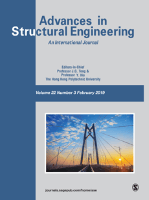
ADVANCES IN STRUCTURAL ENGINEERING
Building Tomorrow: Research That Shapes InfrastructureADVANCES IN STRUCTURAL ENGINEERING, published by SAGE PUBLICATIONS INC, is a leading journal dedicated to the advancement of knowledge in the fields of Building and Construction, as well as Civil and Structural Engineering. With a solid impact factor and a commendable Scopus ranking (Rank #60 in Building and Construction, Rank #105 in Civil and Structural Engineering), this journal stands at the forefront of academic research, providing a platform for high-quality articles that contribute significantly to the discipline. Covering a range of topics from innovative construction techniques to sustainable engineering practices, the journal aims to foster collaborative dialogue among researchers, industry professionals, and students alike. As of 2023, it boasts impressive category quartiles, ranking Q1 in Building and Construction and Q2 in Civil and Structural Engineering. ADVANCES IN STRUCTURAL ENGINEERING is a vital resource for those looking to stay abreast of emerging trends and groundbreaking developments in structural engineering, promoting an environment of continuous learning and application of best practices. With a convergence of research from 1999 to 2024, the journal not only emphasizes theoretical frameworks but also bridges the gap between academia and practical application in engineering projects.
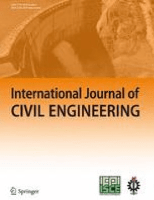
International Journal of Civil Engineering
Transforming Challenges into Engineering ExcellenceThe International Journal of Civil Engineering, published by Springer International Publishing AG, is a premier platform dedicated to advancing the field of civil engineering. With a notable impact factor and a strong reputation reflected in its Q2 quartile rankings in both Civil and Structural Engineering as well as Geotechnical Engineering and Engineering Geology, this journal facilitates the dissemination of high-quality research from 2009 through 2024. Researchers and professionals can access cutting-edge studies and innovative practices that address contemporary challenges in civil engineering, such as sustainable infrastructure development, environmental impacts, and advanced material technologies. Situated in Switzerland, the International Journal of Civil Engineering emphasizes the critical interplay between theory and application, making it an essential resource for students, academics, and industry leaders seeking to stay at the forefront of their disciplines.

Engineering Journal-Thailand
Connecting researchers to contemporary engineering challenges.Engineering Journal-Thailand, published by Chulalongkorn University, Faculty of Engineering, is a prominent academic journal dedicated to advancing knowledge and research in the diverse field of engineering. With an ISSN of 0125-8281 and an unwavering commitment to quality, the journal has established a substantial presence in the academic community since its inception in 2009. As of 2023, it is ranked in the Q3 category for Engineering (miscellaneous) and has achieved a Scopus rank of 137 out of 307, placing it in the 55th percentile of general engineering journals. Although it operates without open access, its impact within the engineering domain is significant, providing a vital platform for researchers, professionals, and students to disseminate their findings and engage with contemporary engineering challenges. The journal serves as a vital resource for those seeking to stay at the forefront of engineering innovation and contributes to the global discourse by bridging local insights with international perspectives.

Journal of Zhejiang University-SCIENCE A
Elevating Engineering Knowledge for Tomorrow's Challenges.The Journal of Zhejiang University-SCIENCE A, published by Zhejiang University Press, is a prestigious academic journal dedicated to advancing the field of Engineering since its first issue in 2003. With an ISSN of 1673-565X and E-ISSN of 1862-1775, this journal has established itself as a significant platform for researchers, professionals, and students interested in the multifaceted aspects of engineering science. Located in the heart of Hangzhou, China, the journal has successfully attained a Q2 rating in the 2023 quartiles for Engineering (miscellaneous), showcasing its impact and quality within the discipline, complemented by a commendable Scopus rank of #57 out of 307, placing it in the 81st percentile. Although it does not currently offer Open Access, the journal is committed to disseminating high-quality research findings that foster innovation and collaboration within the engineering community. The journal's scope encompasses a wide range of engineering topics, reflecting the rigorous and evolving nature of the discipline, making it an invaluable resource for advancing academic knowledge and practical applications in engineering.
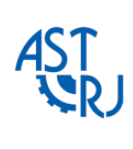
Advances in Science and Technology-Research Journal
Pioneering Research, Transforming TomorrowAdvances in Science and Technology-Research Journal, published by Lublin University of Technology in Poland, is an esteemed open access journal that has been enriching the scholarly landscape since 2012. With an ISSN of 2080-4075 and an E-ISSN of 2299-8624, this journal is dedicated to disseminating cutting-edge research across Computer Science, Engineering, Environmental Science, and Materials Science. Recognized within the Q3 quartile in 2023 across various fields, it holds respectable rankings in Scopus, including Rank #184 in General Engineering and Rank #122 in Materials Science. The journal’s commitment to open access fosters wider dissemination and engagement within the scientific community, making it a vital resource for researchers, professionals, and students alike. As the fields of science and technology continue to evolve, this journal serves as a vital conduit for innovative ideas and collaborative research, inviting contributions that push the boundaries of knowledge.